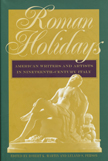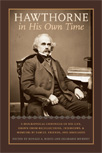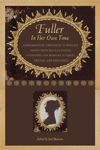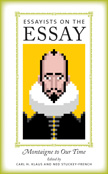Roman Holidays
“Roman Holidays is an impressive collection. These essays offer a broad and refreshing range of perspectives on Italy as a space of provocative and productive otherness in the U.S. cultural imaginary of the nineteenth century. Familiar figures such as Hawthorne, Margaret Fuller, James, and Howells come in for original treatment, as do authors less frequently associated with Italy, like Melville and Frederick Douglass and such important sculptors as Harriet Hosmer, Hiram Powers, Horatio Greenough, and William Wetmore Story. Abundant dialogue with the best recent scholarship further distinguishes this valuable volume.”—Eric Haralson, author of Henry James and Queer Modernity
“…[an] illuminating critical collection…The essays in this collection dovetail very nicely in their questions, use of evidence, and implications, and the issues they raise are well worth attending to…In looking closely at how a number of readers used their experience in Italy to ruminate on the gendered and racial implications of being American, Roman Holidays brings to mind the question of what exactly may have been at stake for the nineteenth-century traveler who thought to take to heart another old, familiar saying: ‘When in Rome [. . .].’”—Henry James Review
Featuring essays by twelve prominent American literature scholars, Roman Holidays explores the tradition of American travel to Italy and makes a significant contribution to the understanding of nineteenth-century American encounters with Italian culture and, more specifically, with Rome.
The increase in American travel to Italy during the nineteenth century was partly a product of improved conditions of travel. As suggested in the title, Italy served nineteenth-century writers and artists as a kind of laboratory site for encountering Others and “other” kinds of experience. No doubt Italy offered a place of holiday—a momentary escape from the familiar—but the journey to Rome, a place urging upon the visitor a new and more complex sense of history, also forced a reexamination of oneself and one's identity. Writers and artists found their religious, political, and sexual assumptions challenged.
Nathaniel Hawthorne's The Marble Faun has a prominent place in this collection: as Henry James commented in his study of Hawthorne, the book was “part of the intellectual equipment of the Anglo-Saxon visitor to Rome.” The essayists also examine works by James, Fuller, Melville, Douglass, Howells, and other writers as well as such sculptors as Hiram Powers, William Wetmore Story, and Harriet Hosmer.
Bringing contemporary concerns about gender, race, and class to bear upon nineteenth-century texts, Roman Holidays is an especially timely contribution to nineteenth-century American studies.






